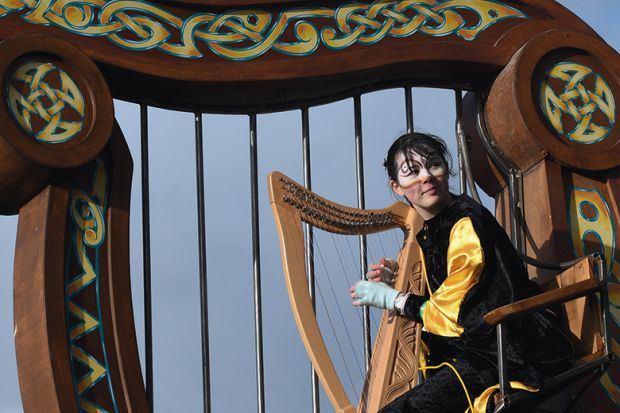The Republic of Ireland is aiming to massively increase its recruitment of top international scientists under ambitious plans by its main science funder to almost double its research spending by 2025.
As part of Science Foundation Ireland’s new strategy, which relies on 15 per cent annual rises in its grant spending, taking overall expenditure from €200 million (£171 million) in 2020 to €376 million by 2025, the agency says it wanted to attract some 20 “world-leading researchers and rising stars” to Ireland annually.
That would represent a huge increase in the number of leading researchers coming to Ireland compared with recent years, said Mark Ferguson, the foundation’s director general. Top scientists are typically offered about €1 million a year in SFI grant funding on top of their university salaries and accommodation costs under the present overseas talent recruitment scheme.
“Normally, we see about one or two [top scientists] a year arriving, but we want this to be much higher,” Professor Ferguson told Times Higher Education.
“We will also be allowing joint appointments, which allow us to bring someone like the quantum physicist Seamus Davis at the University of Oxford to University College Cork as Oxford has the facilities we couldn’t afford to build.”
Recruiting top international scientists will not only capitalise on their research outputs but could also galvanise Irish science across all levels, explained John McHale, professor of economics at the National University of Ireland, Galway, who is currently studying the impact of importing star researchers into smaller research systems.
“After four years, we’re seeing roughly a 20 per cent increase in departmental productivity before you even consider the star researcher’s output, so there is some prima facie evidence that this strategy works,” said Professor McHale, who pointed to other potential benefits, such as the training and mentoring performed by these staff, and a country’s enhanced ability to attract other top talent.
Professor McHale welcomed the new strategy – which calls for an increase in the number of annual principal investigator awards from 64 to 140, of which 35 per cent must be women – particularly its move away from applied research to blue-sky science funding.
“The focus on frontier research is really striking – they’ve obviously heard a lot of frustrations that too much was invested in applied research [in recent years] and listened to that,” he said.
“We want to grow both streams,” explained Professor Ferguson, who said Ireland’s focus on “science for the economy” after the 2008 financial crash was unsurprising. “Now we want an equal focus on applied and frontier science,” he said.
Orla Feely, vice-president for research, innovation and impact at University College Dublin, also welcomed the strategy but said it was important to note the aspirational nature of the targets, which were dependent on receiving generous year-on-year rises in research funding, which could be difficult given the financial disruptions caused by the Covid-19 pandemic.
However, Professor Feely said, “there are many reasons to be optimistic” that these commitments would be made by Ireland’s prime minister, Micheál Martin, a former science minister who had presided over large increases in research spending while in office.
“He has a great personal commitment to this area, and we also have an ambitious science minister, Simon Harris. So there are good reasons to believe these rises will happen,” said Professor Feely. “We know we have to make the case for funding increases, and this strategy is part of that.”




